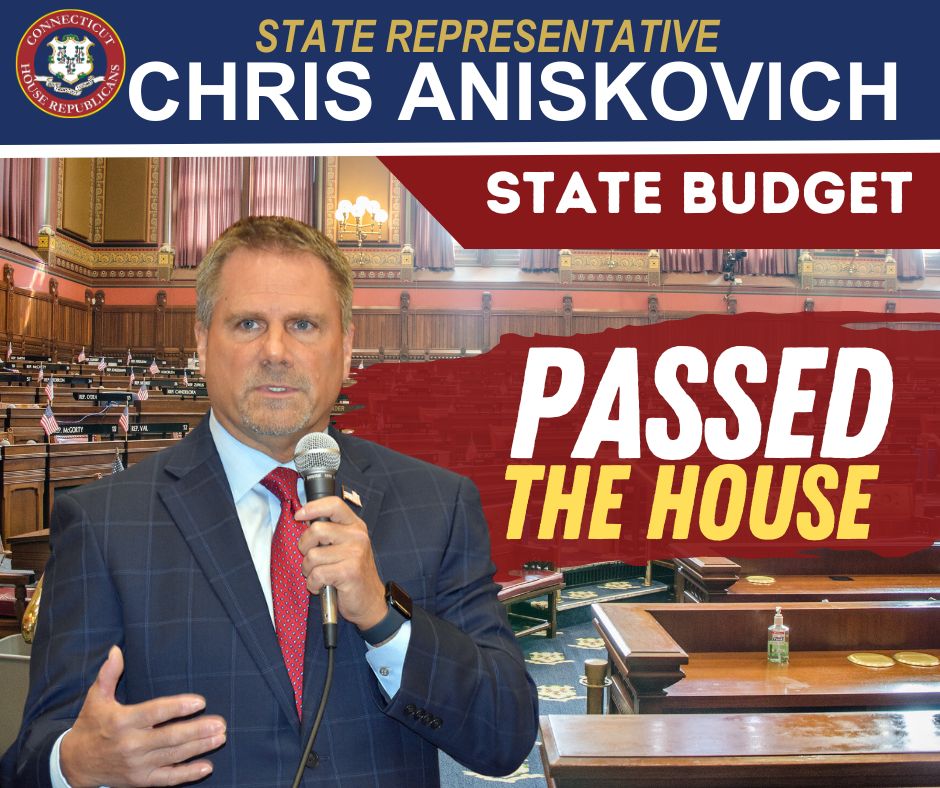"*" indicates required fields
Reps Aniskovich and Carney Applaud Passage of Biennium Budget, Much Needed Tax Relief

Posted on June 7, 2023
HARTFORD – State Representatives Chris Aniskovich (R-35) and Devin Carney (R-23) voted on Monday night in favor of the state’s $51.1 billion biennium budget that honors the fiscal controls put into place in 2017 bipartisan budget by staying below the spending, bonding, and volatility caps.
One of the most notable inclusions in the biennium budget comes in the way of $800 million in tax relief over the biennium, something Representatives Carney and Aniskovich and their Republican colleagues championed last spring. While Monday’s budget doesn’t reach the $1 billion in broad-based tax relief proposed by the representatives, it does contain the largest personal income tax cut in state history.
Additionally, the budget also includes $5.4 million in property tax relief for veterans, increases to essential crisis intervention call responses provided by 211, additional funding for homeless shelters, a newly created ‘Fallen Hero’ account for families of a fallen officer killed in the line of duty, phasing out the income tax exemption for pension & annuity income and individual retirement accounts, and increases to the Earned Income Tax Credit for working families.
“I was pleased to put my support behind a true bipartisan budget that implemented many Republicans initiatives. The historic income tax cut and additional funding for education, nonprofits, and education will go a long way in helping the citizens of Connecticut,” Rep. Aniskovich said.
“This budget is good for taxpayers and good for the residents of the 23rd District. It contains historic tax relief, holds the towns of the 23rd harmless, and adheres to the bipartisan caps set in 2017,” Rep. Carney said. “I was thrilled to see several initiatives within the budget that I have championed over the years. This bipartisan process was refreshing and sent a strong message that collaboration is good for our government.”
After careful examination by Republicans to the hiring frequency of state agencies, it was determined that millions in allocations were made for state jobs that were never ultimately filled. As a result of this analysis, a real-world approach to forecasting future state employee staffing levels was used to find a $200 million reduction in spending.
The final tally when voted on in the House of Representatives was 139-12. The budget has also overwhelmingly passed the senate 35-1. It now moves on to the governor’s desk for his signature.
###